FLUSHING
The Queens Museum is part of a recent trend of institutions taking pains to tell their visitors how terrible their exhibits are. In the room dedicated to the 1964–65 Flushing Meadows World’s Fair, a Disney Wonderful World of Color episode plays showing the fair’s “It’s a Small World” exhibit, with its dancing animatronics, that fjucking song repeating over and over, and Walt quizzically intoning things like “as we enter the mysterious dark continent of Africa, we are greeted by Cleopatra”. The museum wall text roasts all of this, informing you (to paraphrase slightly) “these are stereotypes and they are bad and everyone who made this was bad.”

Who’s the audience for all this, you might ask, and my answer is literally me. I grew up pre-Internet, so the newly globalized world was something you had to get out of the house and see, and as a pre-teen the idea you could go to an exposition and tour most of the non-Communist parts of the world in a few afternoons was as irresistible to me as it was to Milhouse and Bart. Now I know, without having taken a single Media Studies class, that neither musical puppets nor pavilions designed primarily to promote exports give you an accurate idea of a national culture; there are ways in which they’re actively harmful. But golly, dreams of those faraway times when the United States wasn’t actively trying to undermine the global economy are fun.
Anyway, to see the world in a few afternoon was one reason I spent a few days on my spring break in Queens. A closely related one was wanting to eat everything in the borough, which I haven’t dedicated substantial time to attempting since I wandered around Elmhurst in 2004 with a Robert Sietsema printout. Flushing was my top target as the place in America that feels the most like being in a city in China and the Land of the Rising Sun, not least because, pace Californian strip mall burbs, you can walk around. You can wander down Roosevelt and stop a couple of times per block to snack on something—the number 6 wontons from White Bear (amazingly as good as their reputation, given much of their reputation comes from non-Chinese people) or cheung fun from Joe’s Steam Rice Roll (with Joe himself talking you through your order.)
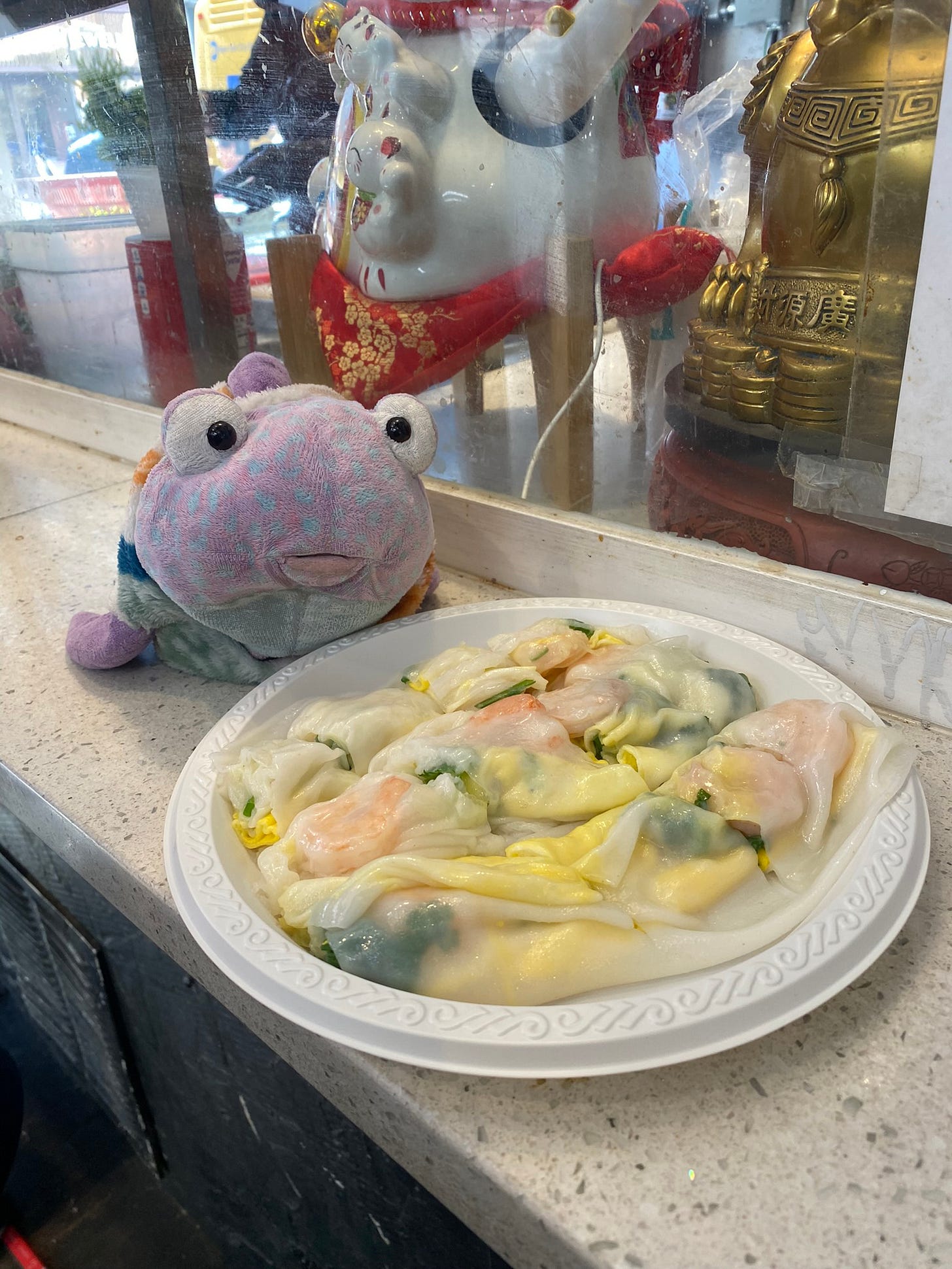
Of course, China has megamalls too now. The moneyed Flushing kids hang out at the newish Tangram Mall, which has the most overwhelming gacha arcade I’ve seen anywhere and a mixed bag of a food court: ube egg tarts are worth trying once but I’ll have the ordinary kind next time, please. Some of the quieter parts of town have a nicer generational and socioeconomic balance. Xu Chu, on Roosevelt a bit west of the main drag, strikes a nice compromise between the refined/elegant school of Sichuan cuisine and the rival “fjuck it, let’s make everything as spicy as possible” school. You can appreciate the skill of the cook and still have a numb mouth after dinner.
LONG ISLAND CITY/ASTORIA
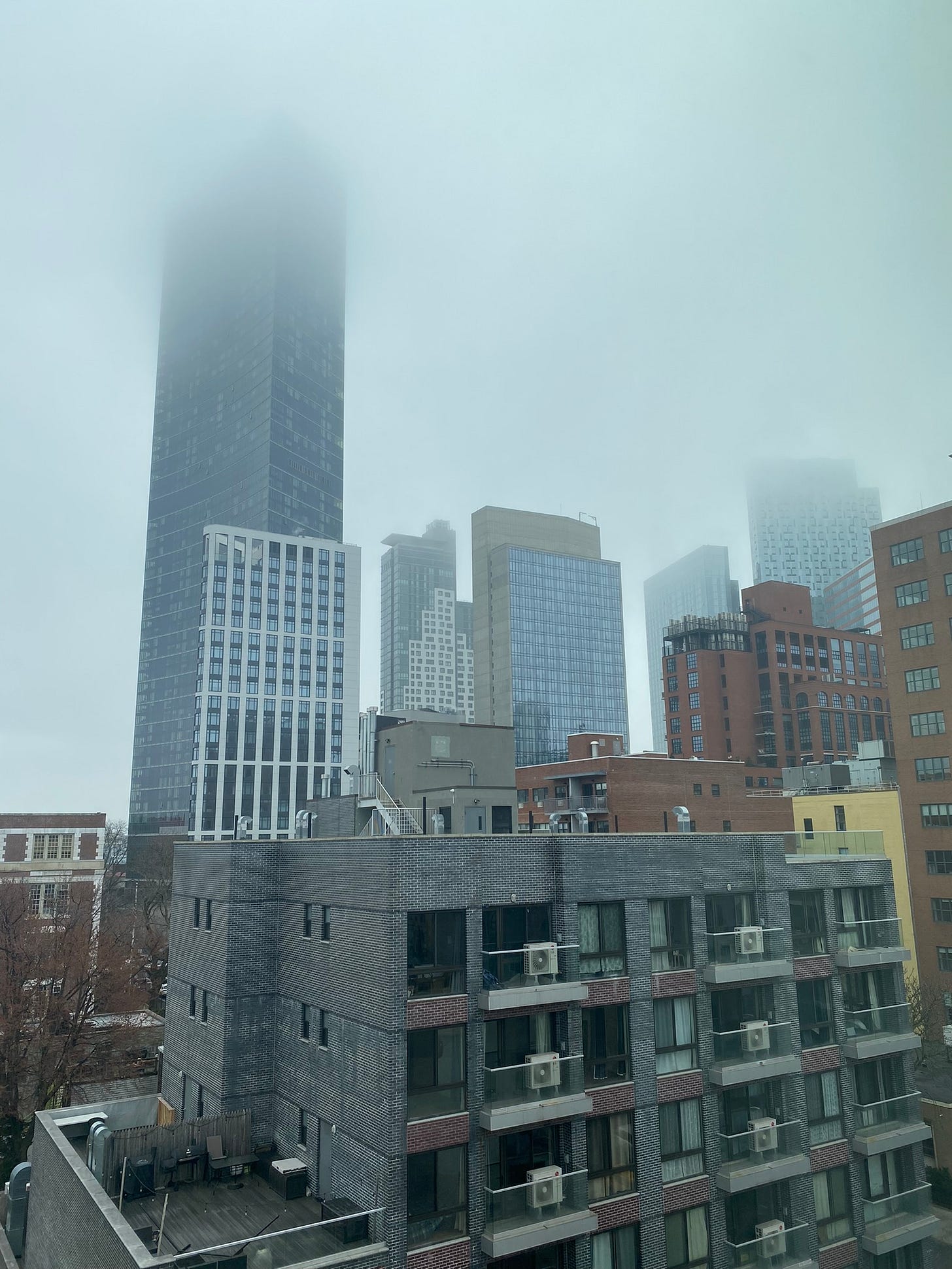
Jen and I stayed in an unassuming and not prohibitively expensive hotel in Long Island City, which unlike so much of Queens is hard to define in terms of character. As an urbanist this doesn’t bother me; you can build housing (with appropriate protections for existing tenants) first and worry about character later. Because it’s New York, there’s still no shortage of tasty things to eat. Downtown LIC is like the Cool Urban Center every city has, with a food hall with stalls called X’s Y and Z-ology, but at least the good chains are around: we liked Kyuramen, the purple sweet potato crepe cake as much as the noodles. More distinctive is Casa Enrique in Hunters Point, now downgraded by Michelin from a star to a Bib Gourmand: and after they incorporated Michelin Man sculptures into the decor too, how ungrateful. The spicy-tangy crab tostadas were about as refined an appetizer as you can find outside of full-on fine dining (my bank account and my pageviews still haven’t recovered from the last time I tried that), and if the salsa verde enchiladas weren’t necessarily better than I’ve had in New Mexico, that’s a high standard.
If you want culture, then thanks to being in one of the two US metros with good public transit, you can hop a couple of subway stops over to Astoria. After stopping at The Freakin Rican for trifongo (the “tri” is plantains, sweet plantains, and yuca), a jibarito (eat your heart out, Double Down), and the only portion sizes that defeated us on the entire trip, we waddled over to the Museum of the Moving Image. The Jim Henson Exhibition, the Labyrinth costumes in particular, was the highlight for one of us (the one who made us drive 400 miles to a second-hand store in Alabama to see the original Hoggle puppet last spring break.
I appreciated how the main exhibition covered both the movies and TV, and that it integrated both technological and social history: you can see a major determinant of America’s progress in the postwar decades in a row of TV sets that get smaller as their screens get bigger. Perhaps this presentation short-changes the art a little, but if your time in New York is limited, you’re better off getting that through some combination of Criterion and YouTube, depending on one’s definition of art. I can only hope the inevitable Museum of the Mobile Phone is as illuminating.
CORONA/JACKSON HEIGHTS
It’s been the assumption of the newsletter since its inception that Louis Armstrong is the greatest musician in recorded history—changed music twice, stayed good for decades after that, never made a Victoria’s Secret commercial—so it shouldn’t have taken me so long to make the pilgrimage to the Louis Armstrong House in Corona. The upside of procrastinating is that in 2023, the Armstrong Center opened across the road, including an exhibit to give more context to those who arrive not holding Pops in quite so high regard. In this respect, it does an okay job. You get the biographical outline, you get the all-American rags-to-riches story, you get some sense of his importance as arguably the first African-American to achieve worldwide stardom. You get his anger over Little Rock while acknowledging it was rare for him to talk about racism publicly.
Here, however, I think more focus on the art would be better. Linearity (maybe even one of those dreadful Welcome Videos) might help: it doesn’t require training to hear how Armstrong’s music dramatically changed in the eight years from “Chimes Blues” to “Star Dust”, and it would only take a little context to show that he dragged popular music with him. Establishing the value of his subsequent career does require more study time, so props to the gift shop for selling me Ricky Riccardi’s What a Wonderful World (along with a “West End Blues” frisbee) and making me finally go through his late period with a medium-toothed comb. No caveats about the House itself. Standing in the study, listening to Pops improvise over a record, I felt aware of how much great music emanated from that room, and how much still exists in the mammoth Armstrong tape collection the museum now owns. Louis is inexhaustible.
Being exhaustible ourselves, we were hungry afterwards, so we went to Leticias near Corona Plaza. This was our first time having Ecuadorian food so I don’t have any direct point of comparison, but it seems like their encebollado deserves a solid place on your fish soup tier list. (Aside: although Corona was notoriously one of the largest swings in the ’24 election, going from 75-25 Biden to marginally pro-Trump, there was no outward sign of that—the political street postings were all leftist, in contrast to the Curtis Sliwa posters I saw on a side trip to visit a friend in deep Brooklyn. Perhaps that indicates the rightward shift was shallow; perhaps that’s wishful thinking.)
Jackson Heights is as close as capitalism’s come to the everlasting world’s fair it promised us, so we couldn’t help but hit up a few places on the way back. We finally got to the OG location of the Birria-Landia empire at Roosevelt and 77th, now a highly streamlined operation. While I’d prefer goat to beef, the consommé was about as rich and deep as you can get with the latter meat. We then headed up to the fuchka carts on 37th, picking Star Fuska because it was the first one we got to. The fuchka came with plenty of egg, which really does give weight to an otherwise airy snack. That weight did get to us, so in lieu of following Satch’s Swiss Kriss diet, after we headed back to the Arepa Lady we took our arepas back to the hotel. These were arepas de choclo, different in style from what I’ve had before: flattish and folded over to emphasize the fillings rather than masa, which given the tastiness of the plantains and avocado therein was a justifiable choice.
WOODSIDE
Boba Fries serves boba and fries. Maybe it is a small world after all.





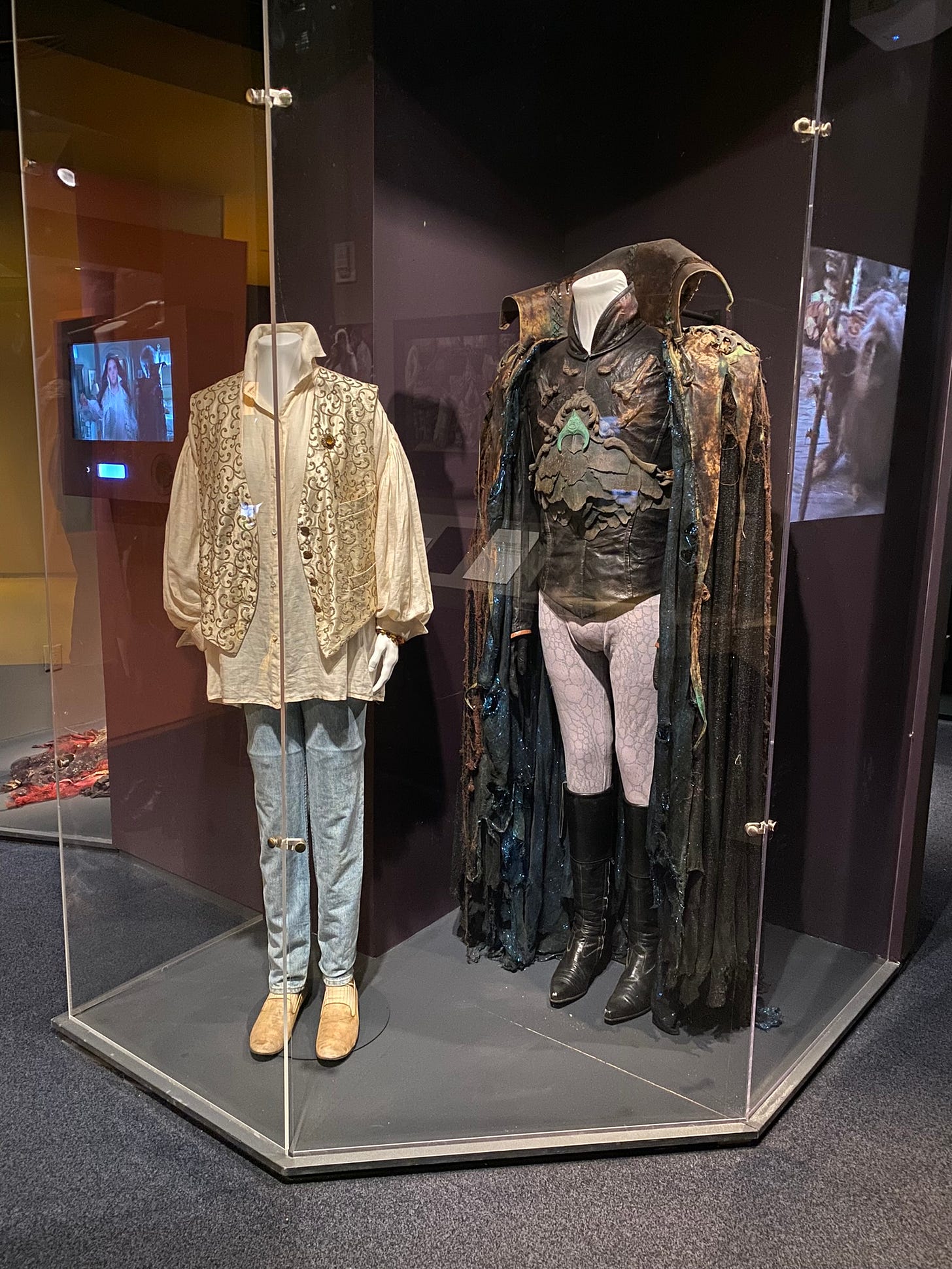
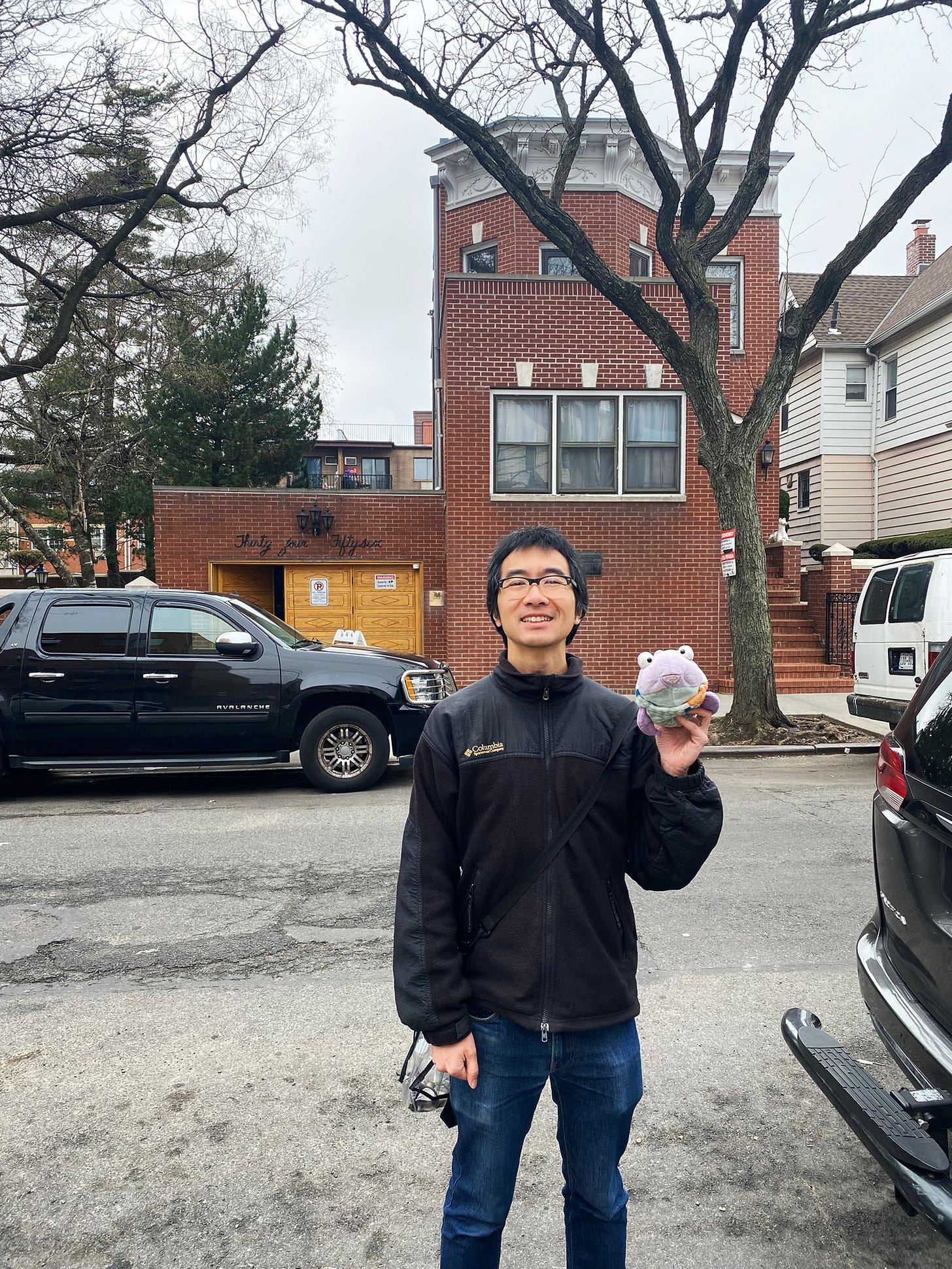
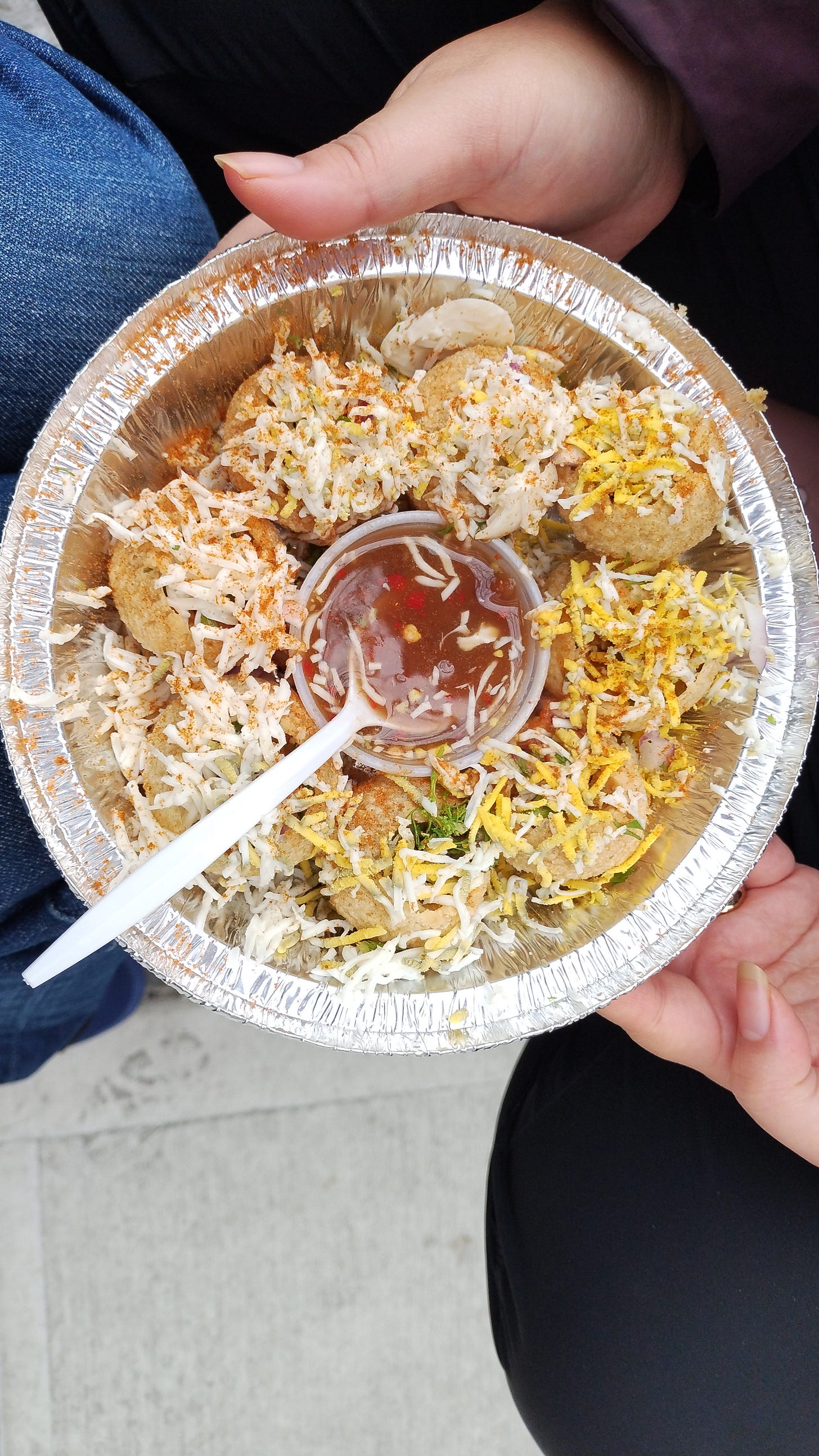
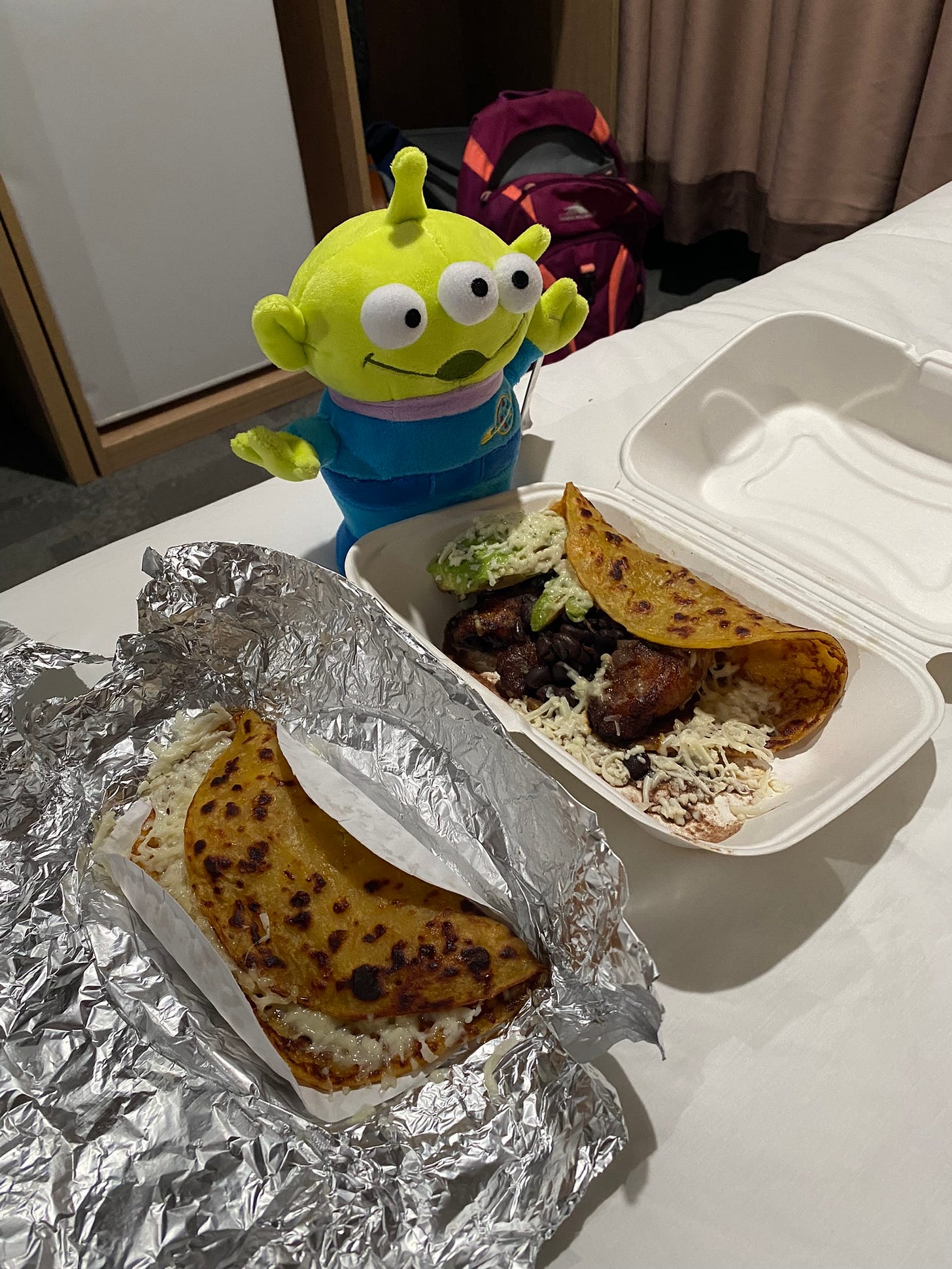
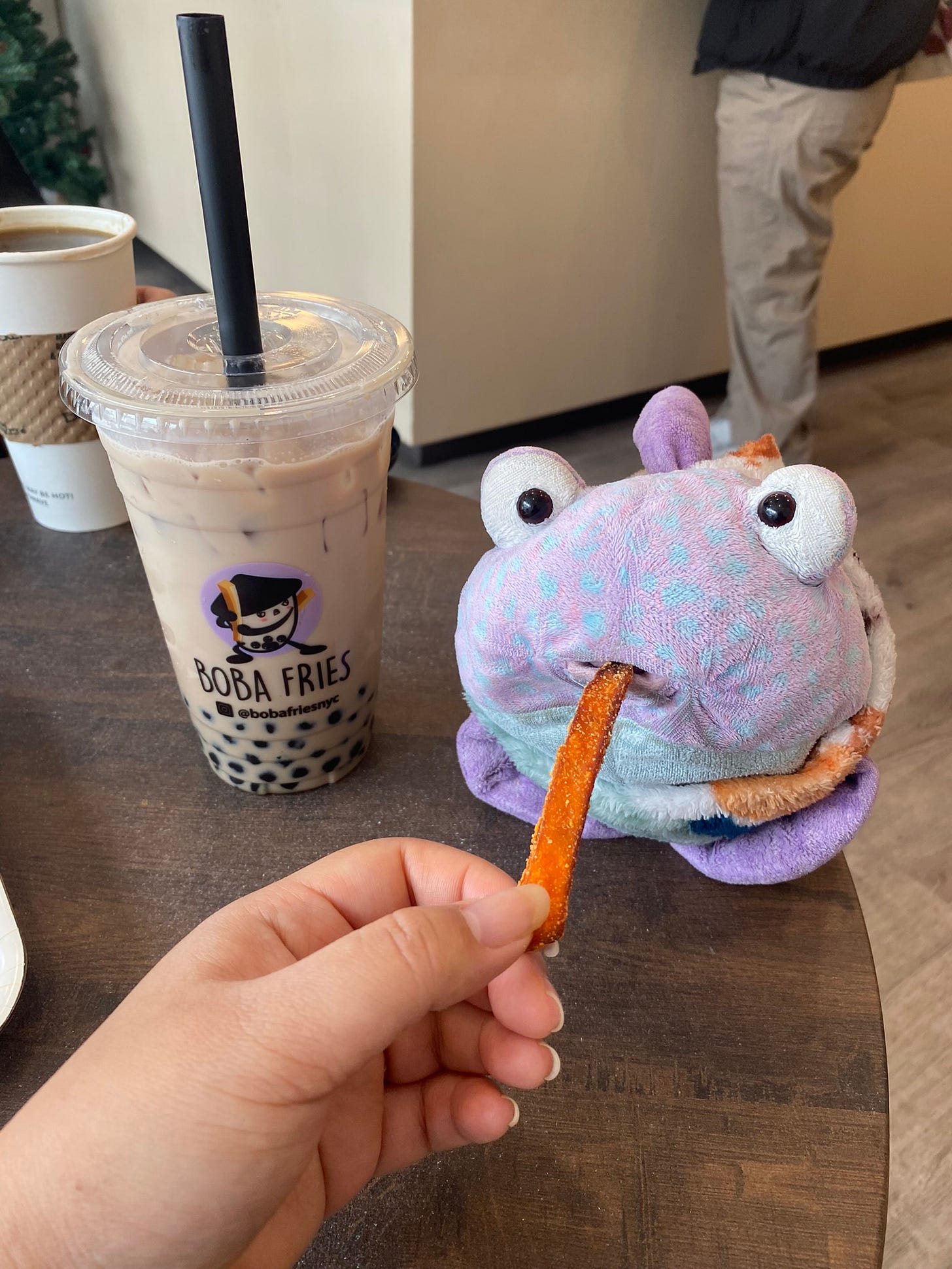
I like seward park and the hawa smoothie across the street. Also did you listen to Babyface Maniac yet?